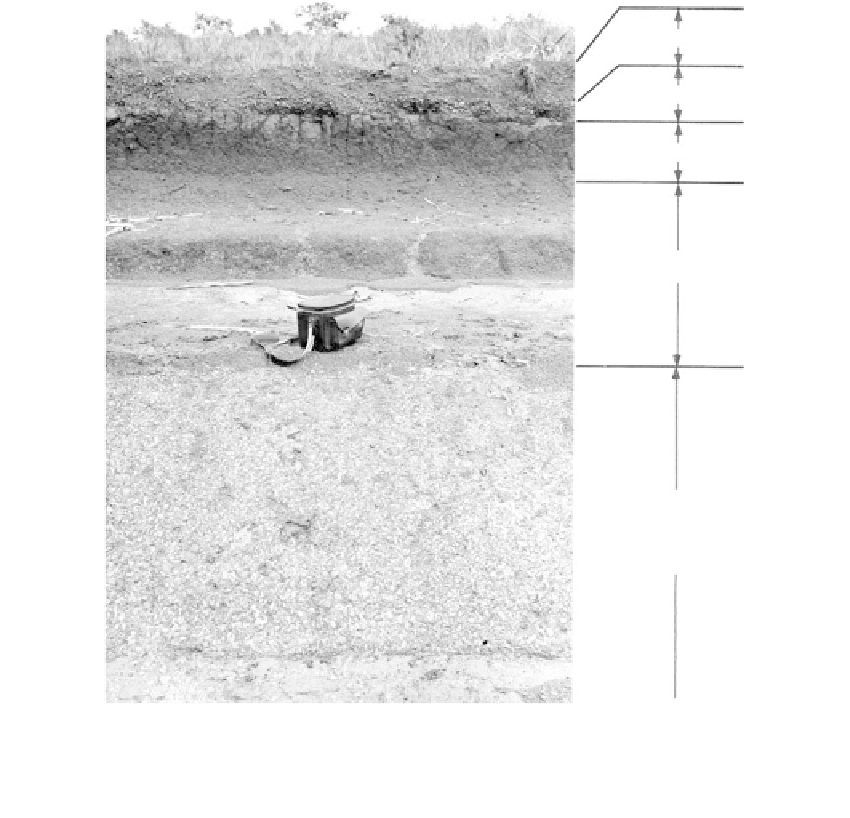Environmental Engineering Reference
In-Depth Information
Topsoil
Laterite gravel
Lateritic soil
Hard red-brown
clayey silt
Hard mottled,
red-gray clay
(tough, plastic,
residual soil)
FIGURE 7.6
Cut showing typical laterite soil development in granite gneiss. New airstrip at Porto Velho, Rondonia, Brazil.
Where the percentage of impurities is high, a substantial thickness of clayey soil can
develop, as shown in
Figure 7.7,
a soil profile in the “porous clays” of Brazil (see
Section
10.5.2).
Shales (Other Than Marine Shales)
Most shales, composed primarily of clay minerals that are completely reduced, develop a
soil profile of limited depth from the decomposition of the impurities. A typical formation
of clayey residual soils from the decomposition of Triassic shales, and the weathered rock
zone, is illustrated in
Figure 7.8.
Approximately 15 ft of overburden has been removed
from the site, which is located in a warm, moist climate. The clays are relatively inactive;
a log of a test boring from the site is given in
Figure 7.9a.
Marine Shales
As described in
Section 6.7.3,
marine shales undergo disintegration and microfissuring
from the stress release and expansion of clay minerals (montmorillonite), and in some
cases develop a clay soil profile from the decomposition of clay minerals. The depth of dis-
integration can reach 40 ft or more (see
Figure 6.90).
The result is normally a mass of hard
fragments in a clay matrix (see
Figure 6.88).


